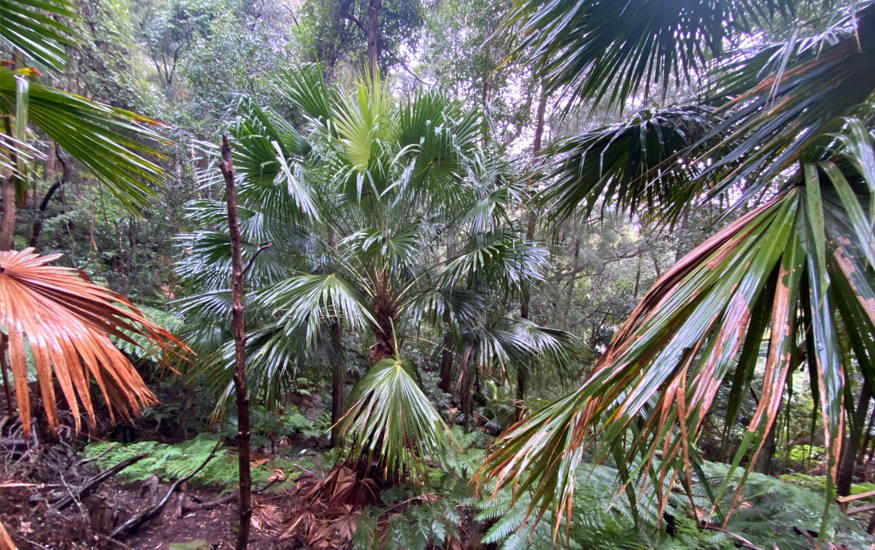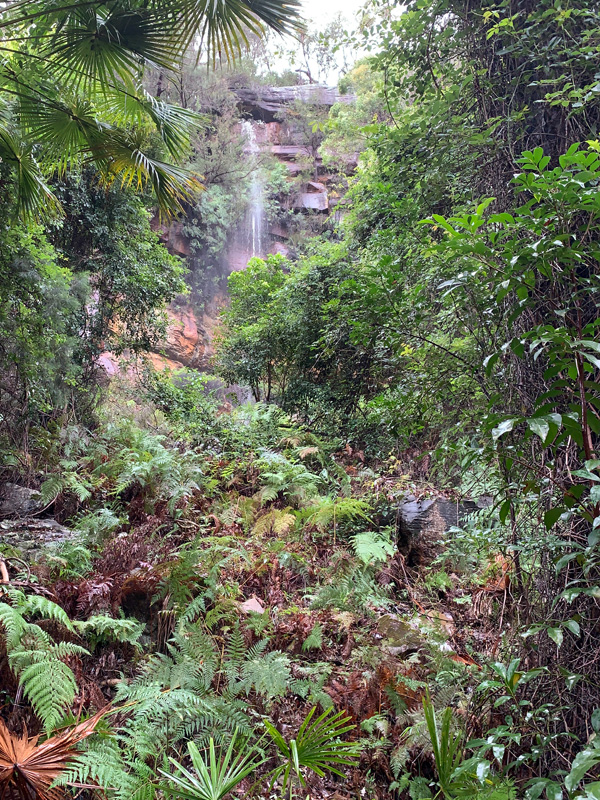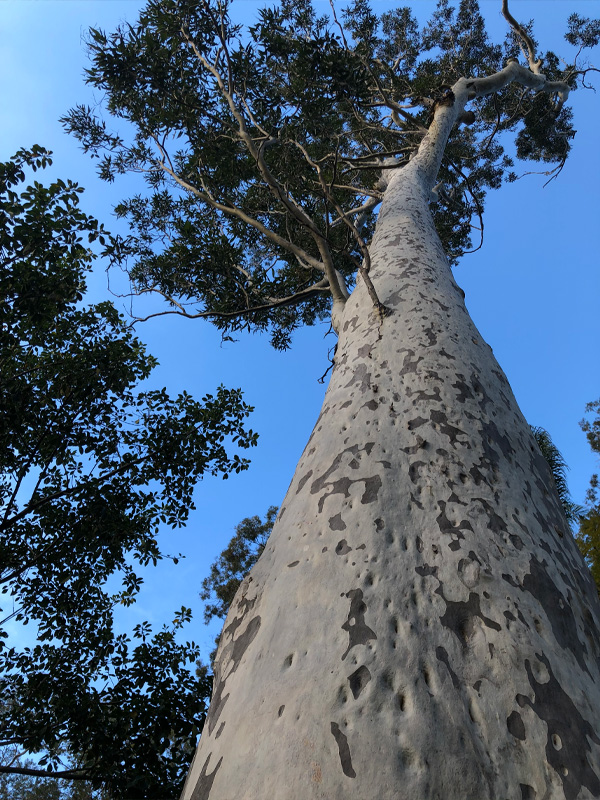This habitat typical on the south-facing slopes of the Western Foreshores is favoured by powerful owls for daytime roosting. Image courtesy: Courtesy Dragonfly Environmental.
A word from the Editor
As we celebrate the terrific upgrade of the WPCA website we also move into a new phase of BaysNews. With monthly publication comes an opportunity to have more in-depth features about Western Foreshores people and surroundings. We start today by taking a look at the ecology of our place. Essentially, all parts need to work together to ensure the health of the whole but that doesn’t always happen, leading to a situation where some species or even whole environments are endangered.
Deborah Jones

The view from Flagstaff. Courtesy Sara Nimmo
Our precious place
By Deborah Jones
This year’s Easter weather couldn’t have been more glorious – perfect for getting out and about. A walk to see the Aboriginal engravings just off the Elvina Trail perhaps, or to beautiful Linda Falls in Lovett Bay, or a more strenuous hike up to Flagstaff Hill for a panoramic view of Pittwater, or any number of other pleasurable activities made possible by the special environment in which we live.
The landscape is abundant with trees, from which we can hear the calls of a multiplicity of birds, including cockatoos, lorikeets, kookaburras, butcher birds and powerful owls. From our doorsteps it’s possible to enjoy glimpses of, or possibly have close encounters with, goannas, wallabies and diamond pythons.
This isn’t news to anyone who lives here, of course. Less obvious, perhaps, is the delicate balance needed between us (the human inhabitants) and them (native flora and fauna) to keep the Western Foreshores a place where all elements live in harmony.
Harmony is an apposite word to use in this context. The more natural diversity that’s retained, “the more we have a beautiful piece played by an orchestra that’s actually got all the right instruments in it”, says Geraldene Dalby-Ball, who is general manager and principal ecologist at Dragonfly Environmental, the Avalon-based specialists in ecological restoration. “If you’re listening to Vivaldi’s Four Seasons you’re not going to expect a French horn in the middle of it. It’s not right.”
For many thousands of years the local First Nations people, including members of the Garigal (or Caregal) clan, managed this area. The arrival of the First Fleet in 1788 spelled disaster. Less than three months after white settlement started in Sydney Cove the colonists came to Broken Bay. By the next year smallpox claimed the lives of perhaps as many as 90 per cent of the traditional owners of the land, or if smallpox didn’t claim them, measles or other diseases for which they had no immunity did. Those who survived had little choice but to move, or be removed.
The landscape changed. Governor Arthur Phillip named the area Pitt Water, after the British Prime Minister William Pitt the Younger and grants of land were given for the establishment of timber businesses and farms – orchestral instruments, if you will, that may have been fine in another context but here were discordant. There were even orchards planted, although as Elvina Bay’s Alan Yuille dryly comments, “the environment fought back” when citrus trees were attacked by fruitfly.
How the land should be managed came to be better understood, and Geraldene Dalby-Ball says it’s important to start any discussion today by acknowledging how the land has been managed for thousands of years along with how much original vegetation is still present. That said, the Western Foreshores are home to areas listed as an Ecologically Endangered Community. The pocket of littoral rainforest around Linda Falls, for instance, is listed as such, as is a close-by spotted gum forest.
Linda Falls and the littoral rainforest. Courtesy Sara Nimmo
Why does it matter if certain species disappear and others take over? Is not change an inevitable part of life? The “wood wide web” can help us understand. As Science magazine describes it, via this WWW, “Millions of species of fungi and bacteria swap nutrients between soil and the roots of trees, forming a vast, interconnected web of organisms throughout the woods.” It’s like an underground superhighway, says Geraldene Dalby-Ball, where interactions taking place in the soil connect a variety of things, such as spotted gums to wattles to kangaroo grass to whatever else is vital in this particular chain.
A large spotted gum almost old enough for hollows to naturally form. Courtesy Dragonfly Environmental
Something alien – like, say, the asparagus fern we know so well here; look it up in the Weeds section on our website – is extremely unhelpful. Unfortunately asparagus fern thrives in spotted gum territory. If asparagus fern overtakes kangaroo grass, for instance, an impact may not be seen for years, but it will make itself felt when times are tough. “We may not see the impact until there’s a drought, or a fire. Like with us, we can be fine until something comes along. If we’re run down we get sick, but if we’re not run down we are resilient,” says Geraldene Dalby-Ball. The same is true for plants, and the more natural biodiversity there is, the more likely there is to be resilience in the system.
Not surprisingly, there is interconnection between the health of native flora and fauna. Native animals need to feed on plants that can provide nourishment at different times of the year. Sugar gliders and feather-tailed gliders need the flowering of spotted gums at one moment and different sorts of wattles available at another.
“Then there’s a time when up on the ridge top, the angophora floribunda – it means abundant flowers – bring a huge amount of insects which the gliders will then feast on. It’s like a circle and there’s something going on at each time. You need the continuum,” says Geraldene Dalby-Ball. “If there’s one piece missing, that really is saying there’s nothing for dinner for two months. It’s potentially catastrophic.”
Speaking of dinner, not everyone is aware of the plants we can harvest for our own use – warrigal greens and native mint among them – and we’ve only touched lightly on the spectacular fauna in our midst.
Well, that’s another story.
Additional information on our Endangered Spotted Gum Forest can be found HERE


